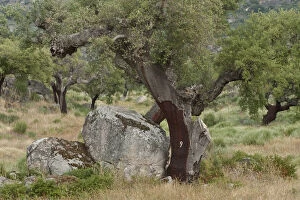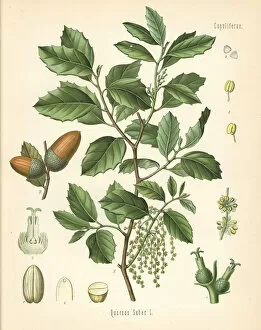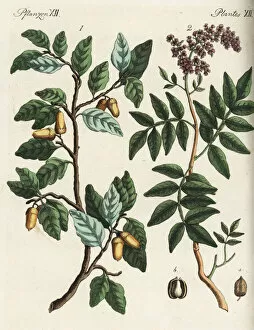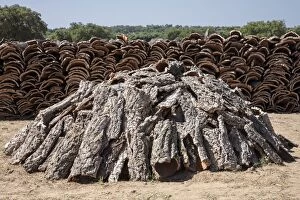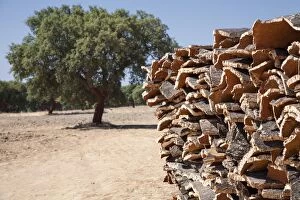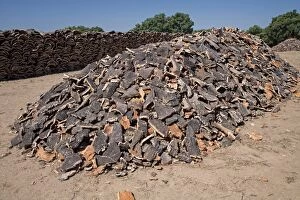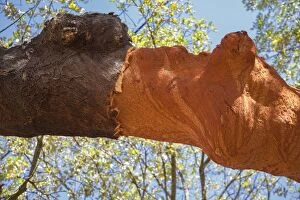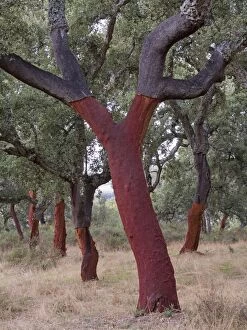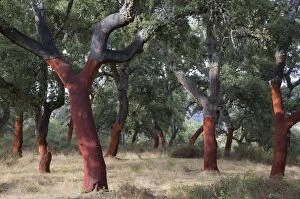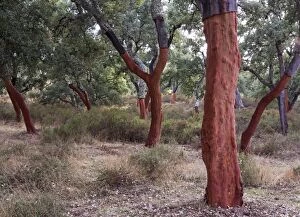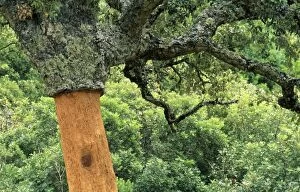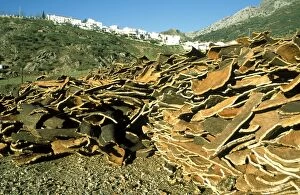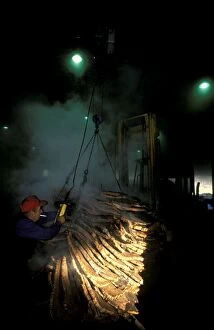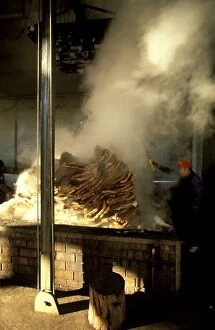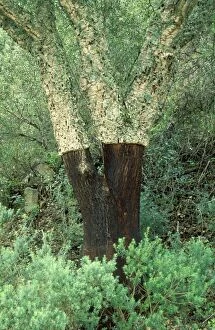Suber Collection
"Discovering the Suber: The Majestic Cork Oak Tree" DDE-90035253 Cork oak, scientifically known as Quercus suber
For sale as Licensed Images
Choose your image, Select your licence and Download the media
"Discovering the Suber: The Majestic Cork Oak Tree" DDE-90035253 Cork oak, scientifically known as Quercus suber, is a remarkable species that captivates nature enthusiasts worldwide. Native to Southern Europe, particularly Portugal's Alentejo region, these magnificent trees are an integral part of the local ecosystem and have been cherished for centuries. Picture No. 11676121 showcases a breathtaking view of a Cork oak standing tall amidst its natural habitat. Its sturdy trunk and sprawling branches provide shelter and sustenance to countless organisms within this diverse ecosystem. In Picture No. 11676181, we witness the unique beauty of the cork bark that has made this tree so famous. Harvested every nine years without harming the tree itself, cork is one of nature's most sustainable resources. This versatile material finds its way into various industries such as wine production, construction materials, fashion accessories, and even spacecraft insulation. The enchanting coexistence between Cork oaks and terebinth trees is depicted in Picture No. 11676319 - two distinct species thriving side by side in harmony. This symbiotic relationship further highlights nature's ability to create balance and interconnectedness among different organisms. As we explore more images from Portugal's Alentejo region (Picture No. s 11676121), we become mesmerized by the vast expanse covered with these majestic trees stretching as far as the eye can see. It serves as a reminder of how crucial it is to preserve our natural heritage for future generations. Quercus suber not only contributes significantly to biodiversity conservation but also plays an essential role in mitigating climate change through carbon sequestration – making it an invaluable ally in combating global warming. Let us cherish these incredible wonders of nature like never before. The Suber stands tall – reminding us all about our responsibility towards safeguarding our planet's rich ecosystems for generations yet unborn.

